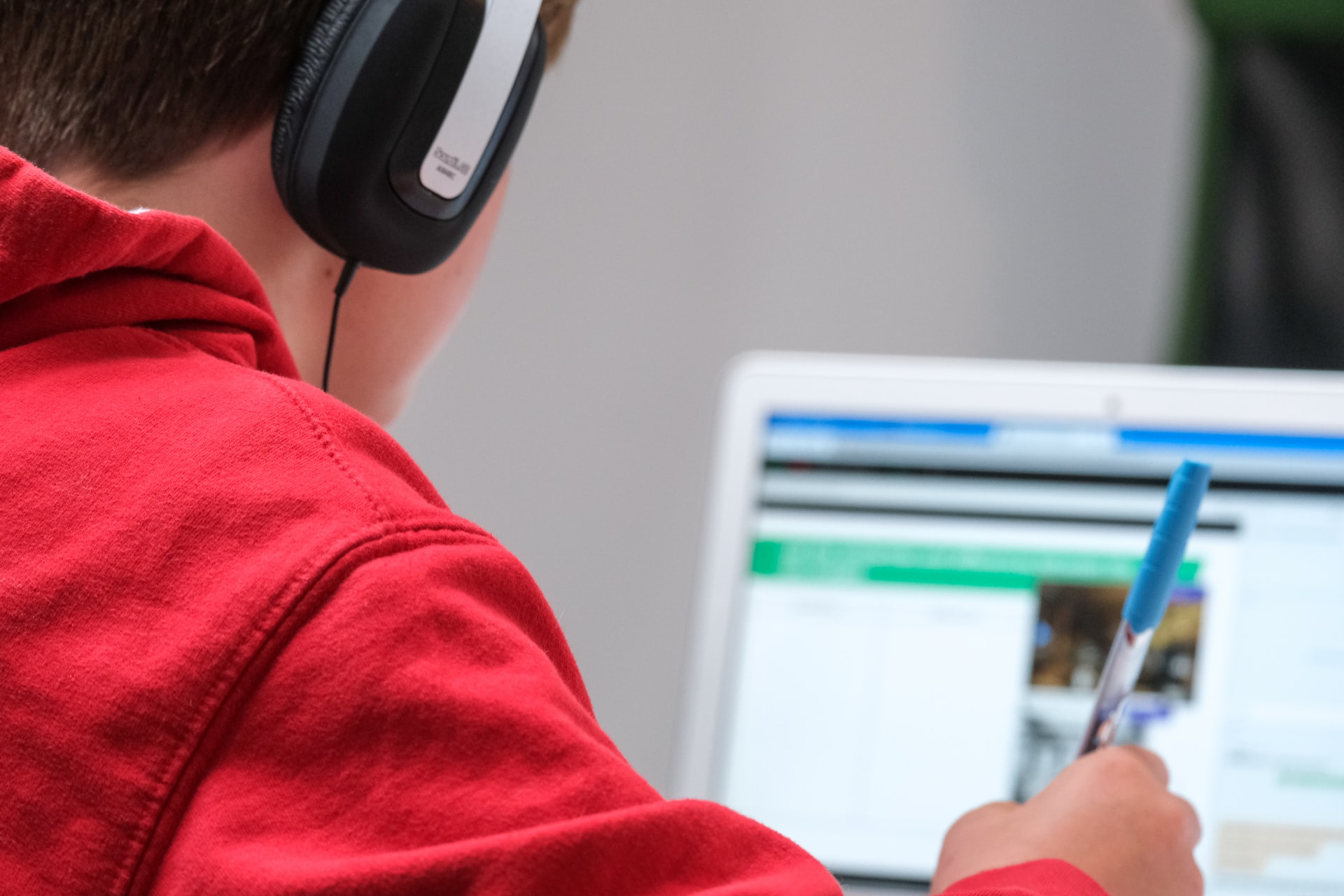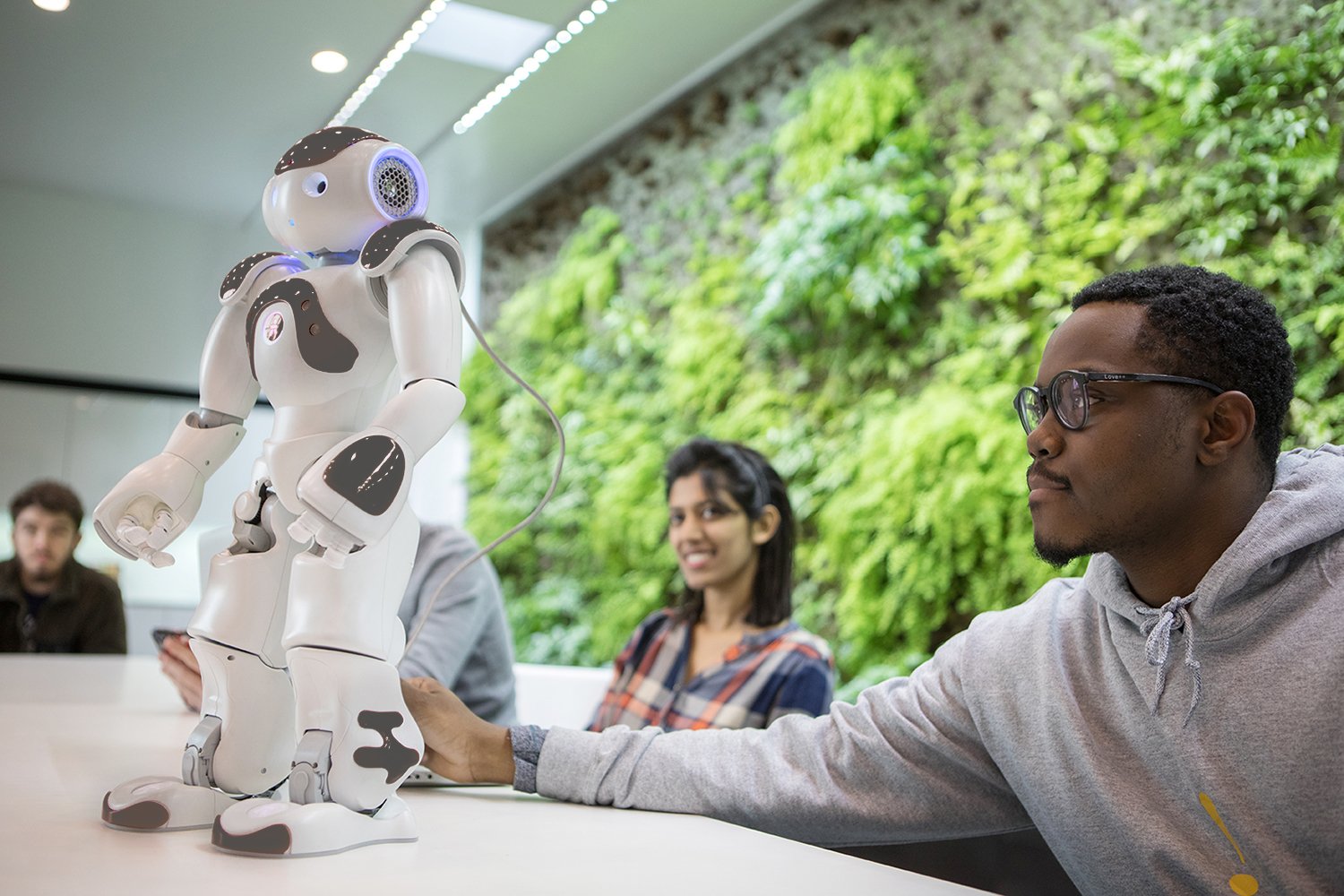The Future Still Lies in Coding
Coding is enormous in education right now.
No wonder. Coding offers so many academic benefits that schools cannot ignore its significance. Sequential processes, computational thinking, and creative problem-solving all make upcoding. It’s the new literacy in schools. There’s so much to like about coding that coding academies and boot camps are springing up everywhere.
Bootcamps can be expensive, but they are intensive. Participants learn as much as possible in three to six months, securing employment as a coder soon after that. Academies, on the other hand, tend to be more flexible. They offer coding training at all levels, and students create code in maker spaces.
Coding appeals to children of all ages. Not only are there plenty of outstanding apps with which to teach coding, but there are also schools focused intensely on learning how to code.
- 0 Comments
- Sep 13, 2021 10:00:00 AM
- Posted by Maria Alejandra Calcetero
- Topics: Robotics, EdTech, STEM, Education, 21st Century Classroom, students, Technology, STEMchat, WomeninSTEM, Edchat, girlsinSTEM, k12, coronavirus, covid19, disinfection robots, Automation, virus-free, virus, disinfection
5 Ways to Get Girls into STEM
As a society, we learn about the world and advance our well-being through science and engineering. The United States may be known around the world for its higher education, but compared to many other leading and steadily emerging countries, we lack a strong focus on educating scientists and engineers. One significant reason that we have fallen behind is that we do not encourage our female students to pursue career paths in Science, Technology, Engineering, and Math (STEM).
This needs to change, as the lack of women in STEM will continue to plague our country until all students, regardless of sex, have adequate opportunities to explore math and science throughout elementary, middle, and high school. If we want to attract the best and brightest minds into the fields that will move us forward, we must look to all of the population. More women can contribute to our field, and we can help make that happen. Below are a few strategies for how we can help.
- 0 Comments
- Sep 8, 2021 10:00:00 AM
- Posted by Maria Alejandra Calcetero
- Topics: Robotics, EdTech, STEM, Education, 21st Century Classroom, students, Technology, STEMchat, WomeninSTEM, Edchat, girlsinSTEM, k12, coronavirus, covid19, disinfection robots, Automation, virus-free, virus, disinfection
Can Robotics Teach Problem Solving to Students?
Critical thinking and problem-solving skills are essential to success at university and in later life. However, the traditional classroom model has done a poor job of imparting these skills to students. The way children have learned in the classroom for generations has focused on lectures and worksheets. Past generations would depend on group sports, clubs, and teenage jobs to impart these vital skills to students.
However, new ideas suggest that robotics may hold the key to teaching problem-solving skills to students. Using robots to teach real-world skills may be a strange concept, but is it worth exploring? We think so and here’s why.
- 0 Comments
- Sep 7, 2021 10:00:00 AM
- Posted by Maria Alejandra Calcetero
- Topics: Robotics, EdTech, STEM, Education, 21st Century Classroom, Technology, STEMchat, Edchat, k12, coronavirus, covid19, disinfection robots, Automation, virus-free, virus, disinfection
How to Ensure Classroom Air Safety During COVID-19
Comparing the efficacy and value of HVAC, HEPA, and UVC systems is a good place to start when analyzing classroom air safety as in-person learning resumes.
- 0 Comments
- Sep 3, 2021 10:00:00 AM
- Posted by Maria Alejandra Calcetero
- Topics: Robotics, EdTech, STEM, Education, 21st Century Classroom, Technology, STEMchat, Edchat, k12, coronavirus, covid19, disinfection robots, Automation, virus-free, virus, disinfection
STEM, Automation, and Sustainability: Helping Create a Better Tomorrow
By Dan Matthews
 Image Source: https://unsplash.com/photos/uXsBGF5CrpU
Image Source: https://unsplash.com/photos/uXsBGF5CrpU
As global temperatures continue to rise and inclement weather events increase in frequency, the effects of climate change are readily apparent. But there’s good news in the realm of climate change: The global call for sustainable solutions has risen alongside the issue, and young people are leading the charge.
Swedish environmentalist Greta Thunberg is, of course, the most well-known of these young activists. And while Thunberg has had to deal with her fair share of criticism and haters since first speaking out in 2018, the young woman also has plenty of support from — peers, family members, and educators alike. For Thunberg, private school education catalyzed her activism, and her teachers did their best to encourage her interest in STEM.
Education and awareness of the harsh realities of climate change, as well as technological advancements in sustainability, may serve a similar purpose for students around the world. Beginning in primary school, a STEM-focused educational model helps to lay the foundation necessary for students to take their skill sets into the future and create a better, more sustainable tomorrow. Students who are passionate about sustainability may ultimately choose a career path in which they can make a real difference.
Here’s what you need to know about facilitating an interest in STEM among students of all ages, and how technological advancements in automation, waste reduction, and more fit into the overall picture.
- 0 Comments
- Sep 2, 2021 10:00:00 AM
- Posted by Maria Alejandra Calcetero
- Topics: Robotics, EdTech, STEM, Education, 21st Century Classroom, Technology, STEMchat, Edchat, k12, Automation
How To Use AI To Improve Your Online Lessons
By Nancy P. Howard
 Photo by Compare Fibre on Unsplash
Photo by Compare Fibre on Unsplash
Artificial Intelligence has played an important role in the development of a variety of industries. In fact, it has probably had an impact on any industry you can think of. Examples of new tech such as Pepper Robot which can teach Science, Programming, and Robotics prove just how many opportunities AI opens for educators specifically.
Indeed, there are many ways you can use AI to improve education, especially when it comes to e-learning. Hence, here’s how to use AI to improve your online lessons and how these practices will allow you to deliver better learning experiences to your students.
- 0 Comments
- Sep 1, 2021 10:00:00 AM
- Posted by Maria Alejandra Calcetero
- Topics: Robotics, EdTech, Education, Technology, VR, Realidad Virtual, Edchat, virtual learning
Here’s Why Digital Math Tools Are a Must-Have
 Photo by Annie Spratt on Unsplash
Photo by Annie Spratt on Unsplash
Education technology is a must, in the classroom and beyond--and digital math tools are an integral part of an ed-tech toolbox.
- 0 Comments
- Aug 31, 2021 10:00:00 AM
- Posted by Maria Alejandra Calcetero
- Topics: Robotics, EdTech, Education, Technology, VR, Realidad Virtual, Edchat, virtual learning
Service And Delivery Robots to Aid the Labor Shortages. Bring Automation to Help!
We all heard about the labor shortages that are affecting every aspect of our country in our economy, especially when it comes to the service, food, and hospitality industries.
Without enough employees, companies will only be able to complete a limited number of projects, robots are essentially not replacing individuals, not replacing employees, they are here to augment the people that are working. They are here to automate the mundane tasks that humans should not do! Check the video below and learn how.
Discover more about Business Robots with RobotLAB!
- 0 Comments
- Aug 27, 2021 10:15:42 AM
- Posted by Maria Alejandra Calcetero
- Topics: Robotics, EdTech, Education, Technology, VR, Realidad Virtual, Edchat, virtual learning
VR Expeditions 2.0 won the Tech & Learning Awards of Excellence Back To School for Primary and Secondary Education!
 |
 |

RobotLAB is excited to announce that VR Expeditions 2.0 received the Awards of Excellence Back to School for Primary and Secondary Education by Tech&Learning.
RobotLAB VR Expeditions 2.0™ is inspired by the great work Google did, and following feedback from thousands of educators, RobotLAB created a VR tool tailored to educators’ needs.
In the past four years, RobotLAB was the leading partner for Google Expeditions and the only one certified to ship Google Expeditions Kits globally. Following Google’s decision to stop their VR efforts, discontinuing Google DayDream and the Google Expeditions app, RobotLAB decided to take advantage of this opportunity and introduce VR Expeditions 2.0TM.
Some of the areas of improvement are:
Content – A unique partnership with Encyclopædia Britannica® to bring high-quality, curated, and tailored content, along with student hand-outs and additional teacher resources that make educators' life easier.
Visuals – In Expeditions 2.0™, all the 360-degrees photos and videos are high definition, 4k resolution, and designed to bring the best of the world to your classroom, in HD quality.
Classroom Management – A new feature was developed from the ground up. Now teachers can create playlists and save expeditions for offline teaching, without any need for internet access. Create classes and track the progress per class is an essential tool for educators struggling to manage their time more efficiently.

Thank you to all the team, great job!
Learn more about Expeditions 2.0 by RobotLAB!
Let's go places!
- 0 Comments
- Aug 26, 2021 2:00:00 PM
- Posted by Maria Alejandra Calcetero
- Topics: Robotics, EdTech, Education, Technology, VR, Realidad Virtual, Edchat, virtual learning
How Robots Can Help and Simplify Processes on Education
By David Walker

Robotization allows people to more efficiently perform routine tasks. Rapid technological changes that we had in the last decade must increase the range of automated systems’ possibilities. This cannot but affect the student’s curriculum. Most countries, such as the USA, Korea, China, Turkey, are increasingly investing in STEM. This is the right strategy because innovation is everywhere around us.
Robotic systems are becoming more common every year. Such machines are useful for people of different specialties and students. So we decide to find out how advanced systems can affect the quality of education. This is an important issue for business leaders, students, and teachers who will need to improve their lectures.
There are thousands of enthusiasts who are confident that the time has come for AI systems. But that's not so clear considering the hardware costs. Of course, most students can use programmed robots in computer science lessons or during coaching.
- 0 Comments
- Aug 26, 2021 10:00:00 AM
- Posted by Maria Alejandra Calcetero
- Topics: Robotics, STEM, Education, Curriculum, Robots,, Learning, Innovation, Makerspace, Educators, teaching, distance learning, Automation, Online Learning
Relevant Posts
Popular Posts
Subscribe to Email Updates
-
I Want To Learn MoreADDITIONAL INFORMATION




